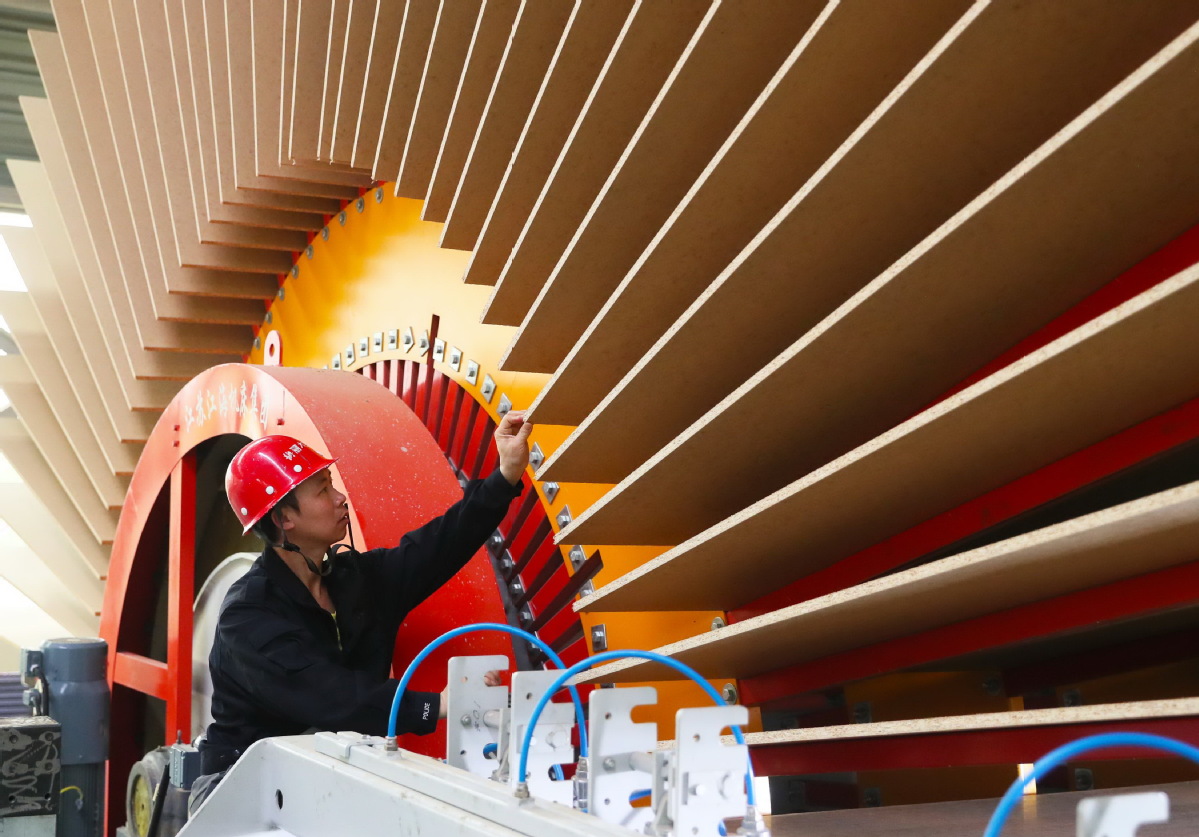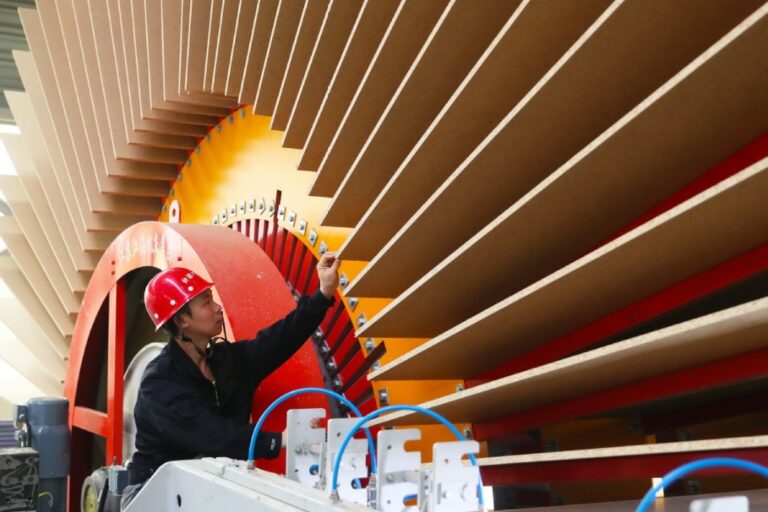
Employees work on the production line of a furniture manufacturing company in Yongzhou, Hunan Province. Liu Guixiang/China Daily
China will take further measures to shore up the recovery, including accelerating local government special bond issuance and encouraging large-scale equipment upgrades and trade-in transactions of consumer goods, the country’s top economic regulator said on Tuesday.
Analysts said the country is rushing to address issues linked to still-weak domestic demand and a struggling real estate sector with further stimulus measures coming, which would significantly stabilise expectations and restore confidence in the world’s second-largest economy.
Li Chao, spokesman for the National Development and Reform Commission, stressed the country’s commitment to sustaining the recovery and optimizing the manufacturing structure, saying more efforts would be made to foster new high-quality productive forces, promote the high-quality development of the manufacturing industry, expand effective investment and stimulate consumption.
“To support the nation’s major strategies and strengthen security capabilities in key areas, we will make better use of ultra-long-term special purpose bonds and increase the issuance and use of local government special bonds,” Premier Li Keqiang said at a press conference on Tuesday. “We will accelerate the implementation of the central budget investment plan.”
From January to April, the NDRC approved 50 fixed asset investment projects worth a total of 320.7 billion yuan ($44.32 billion), mainly in the high-tech and water conservancy sectors. In April, the NDRC approved 20 fixed asset investment projects worth 115.2 billion yuan.
To stimulate domestic consumption, the country said it would further implement policies that prioritize job security and income growth, alongside efforts to promote large-scale equipment renewal and trade-in trade in consumer goods. “This includes encouraging spending on consumer goods such as cars, home appliances and mobile phones, promoting new consumption scenarios and formats, and creating advanced and applicable solutions for (digital) transformation and upgrading by businesses. Includes incentives to encourage the adoption of technology.”
Latest data from the Office for National Statistics shows the recovery remains uneven. According to the National Bureau of Statistics, China’s value-added industrial production rose 6.7% in April, following a 4.5% year-on-year increase in March, while retail sales rose 2.3% in April, compared with a year earlier in March. This was lower than the 3.1% increase.
China’s fixed asset investment increased by 4.2% year-on-year in the first four months, and by 4.5% year-on-year in the first quarter.
Xiong Yuan, chief economist at Guosheng Securities, said the latest data confirms an uneven recovery across the economy.
“There were notable improvements in sectors compared to external demand, such as exports, industrial production and manufacturing. However, on the domestic demand side, consumption and investment were worse than expected.”
Citing recently announced government policies, including a series of real estate easing measures, Xiong said China aims to address issues and pressures arising from still weak demand and confidence. To boost domestic demand, China is likely to introduce further stimulus measures, including further reductions in reserve ratios and interest rates for both banks.
Robin Xin, chief China economist at Morgan Stanley, said despite future pressures and challenges, robust exports and manufacturing capital investment were likely to be the main growth drivers this year, driven by a policy push to recover global trade and improve supply chains.

